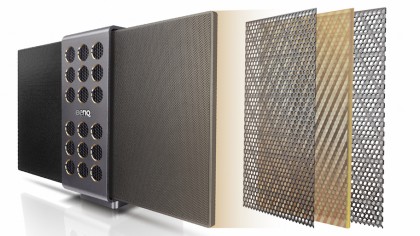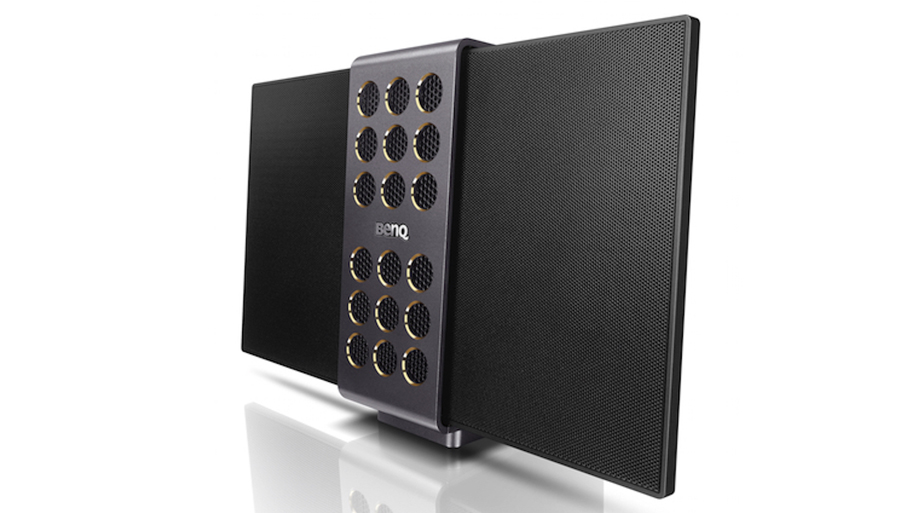Why you can trust TechRadar
How good the TreVolo sounds depends on what sort of music you feed it though when it's at its best, it really is very good.
As noted earlier, electrostatic speakers tend to have quite distinctive characteristics. They tend to deliver impressive clarity in the upper-mid and treble parts of your music, but can struggle compared with normal 'full-size' speakers when it comes to delivering bass. This is why most systems that use electrostatic speakers (including the TreVolo) partner them with separate bass components.

In action the TreVolo is slightly restricted in what it does well by its electrostatic characteristics. Feed it fairly sparse and/or very cleanly defined and detailed music and it sounds good bordering on stunning. Feed it something dense and bassy, though, and it slides back in to average territory.
Focussing first on its strengths, the amount of detail you can hear from certain types of music is stunning, well beyond anything else I've heard at a similar price level from such a relatively small speaker system.
You can pick out extra breathing and background instrumental noises when listening to relatively sparse content like the Antony & The Johnsons' I Am A Bird Now album, and Antony's falsetto voice takes on an even more, entirely appropriate, ethereal feel. I've never heard Hope There's Someone sound so accurately and heartbreakingly fragile before on anything other than a high-grade hi-fi system.
Other predominantly vocal-driven, relatively sparse material like Nick Cave's The Boatman's Call album also sounds superb, putting you right there in the recording studio with the artist.

Piano-based classical music sounds gorgeous too, as can orchestral pieces if they're not too dense or loud. Think Pachelbel's Canon rather than the 1812 Overture.
Sign up for breaking news, reviews, opinion, top tech deals, and more.
If jazz is your bag then again the TreVolo's electrostatic-based audio characteristics will for the most part leave you feeling more than satisfied at how good such a small and portable device can sound.
There's a more general strength to the TreVolo's sound, too, in that its soundstage extends far beyond the speaker's physical form, delivering height as well as width to present you with an immersive wall of sound capable of filling a surprisingly big room - despite the fact that actually the TreVolo can't go as loud as some other Bluetooth speakers.
So what sort of music does the TreVolo struggle with? Essentially it's not a great fan of heavy bass or very dense, multilayered sounds. Which means it's not the best option for fans of bass-driven dance or garage music or dense 'wall of sound' rock or indie music.
The layered cascading guitars of something like The Boo Radleys' Everything's Alright Forever LP, much of the new Swervedriver album or anything by My Bloody Valentine sound muddy and muffled, while the vocal tracks on such dense material are left sounding like a child singing into an empty cereal box.

It doesn't help the TreVolo's case with dense and/or beaty music that it can sound as if it's digitally processing the most raucous moments, resulting in a more compressed sound and even what sounds like a sudden drop in volume at times.
It's worth adding, too, that the TreVolo really thrives on high quality sources. It doesn't seem to have either the processing chops or enough 'give' in its speaker range to handle heavily compressed music well. The difference in Radiohead's King Of Limbs encoded in FLAC and a typical MP3 bitrate was even more night and day on the TreVolo than it usually is with 'desktop' speaker systems. So if you get a TreVolo try to use the highest bit-rates you can for your music sources without eating up insane amounts of memory on your storage devices.
Another issue some may have with the TreVolo's sound is that it doesn't deliver an especially defined sense of stereo separation. This won't annoy everyone; indeed, I can imagine many people liking the more organic, immersive feel you get from the TreVolo. But if you're the sort of person who likes a more clinical stereo sound again the TreVolo may not be for you.
One final issue with the TreVolo's sound is that it's more dependent on where you place it than most similar types of device. Bass increases, and sounds more integrated with the rest of the frequency range, if you place the system as close as you can to a wall. And I also found that the sound quality increased drastically when sitting near the speaker if I tried to position it at roughly the same height as my head.

John has been writing about home entertainment technology for more than two decades - an especially impressive feat considering he still claims to only be 35 years old (yeah, right). In that time he’s reviewed hundreds if not thousands of TVs, projectors and speakers, and spent frankly far too long sitting by himself in a dark room.
